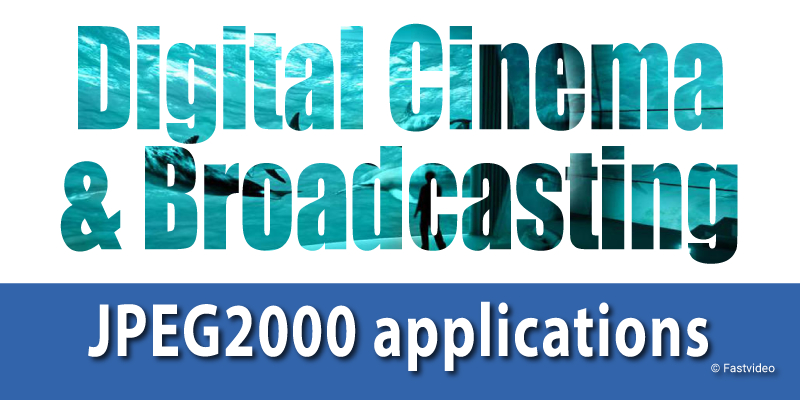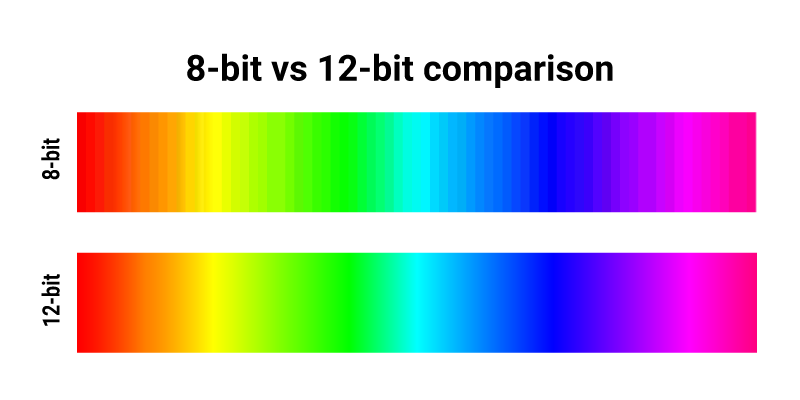JPEG2000 in science, healthcare, digital cinema and broadcastingThis article is devoted to the JPEG2000 algorithm and will be presented in two parts. In the first part, we will discuss the key technologies of the algorithm and explain why it has become so popular in digital cinema and broadcasting. In the second part, we will talk about other application areas and important features of JPEG2000. We will also discuss its main drawback and present a solution that can significantly improve the usability of JPEG2000. 
Part 1: JPEG2000 in digital cinema and broadcasting. Features of JP2 formatThe cinema captured the hearts and minds of people all over the world from the very beginning. Comedy movies by Charlie Chaplin and horror films by Alfred Hitchcock left no one indifferent. It took just a little bit more than a century for the industry to evolve from black-and-white silent cinema to IMAX movies, the quality of which leaves a deep impression the moment a spectator watches one for the first time. Okay, but are you aware of what makes IMAX movies so captivating? And why does it differ so much in video quality from what we used to watch on standard TV channels? The answer is the compression algorithm and image format used.
JP2 is the file format for images compressed with the JPEG2000 algorithm
1. JPEG2000 in digital cinemaThe JP2 format (among others) has been actively used in digital cinema for a long time. It was developed in 2000 and selected as a digital cinema standard by the Digital Cinema Initiatives (DCI) group, which includes Disney, Fox, Paramount, MGM, Sony Pictures Entertainment, Universal, and Warner Bros. Studios, in 2004. The same year, some amendments relating to digital cinema were added to the first part of the JPEG2000 standard.
Good compression for digital cinema was simply necessary. An hour-and-a-half movie in 2K or 4K resolution with 12-bit color channels and 24 fps, compressed using JPEG2000 at a standard bitrate of 250 Mbit/s takes up to 160 Gigabytes.
The JPEG2000 compression algorithm, thanks to which we can enjoy vivid images in IMAX, is based on two key technologies — a discrete wavelet transform (DWT) and embedded block coding with optimal truncation (EBCOT), each of which has its own role:
2. Format features: 12-bit and lossless compression optionIn this section, we will discuss the JPEG2000 format itself, its features and applications. So how come images in JP2 format are so fascinating? The answer is simple: the color depth. One of the most important advantages of the format is working with high-bit data. In other words, the JP2 format is designed to describe one pixel of an image using more bits than a monitor that is not designed for professional color work, and thereby store more information about color. If you compare a standard JPEG image (8 bits per channel) with images in the IMAX format (12 bits per channel), you’ll see that an 8-bit image simply cannot convey such a range of color and brightness as a 12-bit image. As a consequence, IMAX image quality differs fundamentally.  Another important advantage of the JPEG2000 algorithm is the relationship between the compression ratio and the image quality (measured by any metric). The image file size and the transmission speed depend on the compression ratio. What’s more, the quality of the restored image depends on the compression as well. It’s quite clear that the presence of artifacts does not delight anyone. Thanks to the use of wavelets (DWT), images in JP2 don’t acquire such conspicuous artifacts at high compression ratios as in its predecessor JPEG — when compressing an image with JPEG, the boundaries of 8x8-pixel squares become visible. It’s impossible to completely avoid artifacts, but visually they’re much less noticeable. As a result, JPEG2000 allows you to compress images more, and lose much less quality than JPEG allows with the same compression ratios. You can find a more detailed comparison of JPEG2000 with JPEG in one of our articles. It’s worth noting that JPEG2000 was developed to provide both lossy and mathematically lossless compression in a single compression architecture. Depending on its contents, an image can be compressed up to 2.5 times without any quality loss, while its data footprint is decreased to 60%. However, there are always exceptions: some images can’t be reduced in size using lossless compression or compression ratio would be close to 1, but it’s quite achievable for the majority of them. Anyway, such compression capabilities are in great demand wherever it’s necessary to store a large amount of data in a compressed form for a long time (e.g., documentation, images, and video), while maintaining the possibility of lossless recovery. For example, it can be quite useful in libraries, museums, etc.
Lossless compression is of great use in the following situations:
For example, early detection of diseases, research of nano-objects and processes at the sensitivity limit of a microscope, study of extremely distant space objects.
3. JPEG2000 in broadcastingOne more use case of the JPEG2000 format which is worth mentioning is sports broadcasting, such as football and basketball tournaments. During broadcasting, the still-uncompressed video is transmitted from the camera to an add-on device, which compresses the images using JPEG2000. Subsequently, they are transmitted in JP2 format to the server where the re-encoding is performed to create a video suitable for an audience. In this case, both fast image transmission and quality preservation are essential. JPEG2000 uses EBCOT coding, which makes it possible to select the order of alternation of resolutions, quality layers, color components and positions within compressed bytestream. Thanks to EBCOT coding, JPEG2000 supports dynamic quality distribution. In other words, it allows you to automatically adjust the amount of transmitted data depending on the bandwidth of the channel. Thus, images of the highest possible quality for a given IP channel are quickly transmitted to the servers. To be continued…
Other info from Fastvideo concerning JPEG2000 |